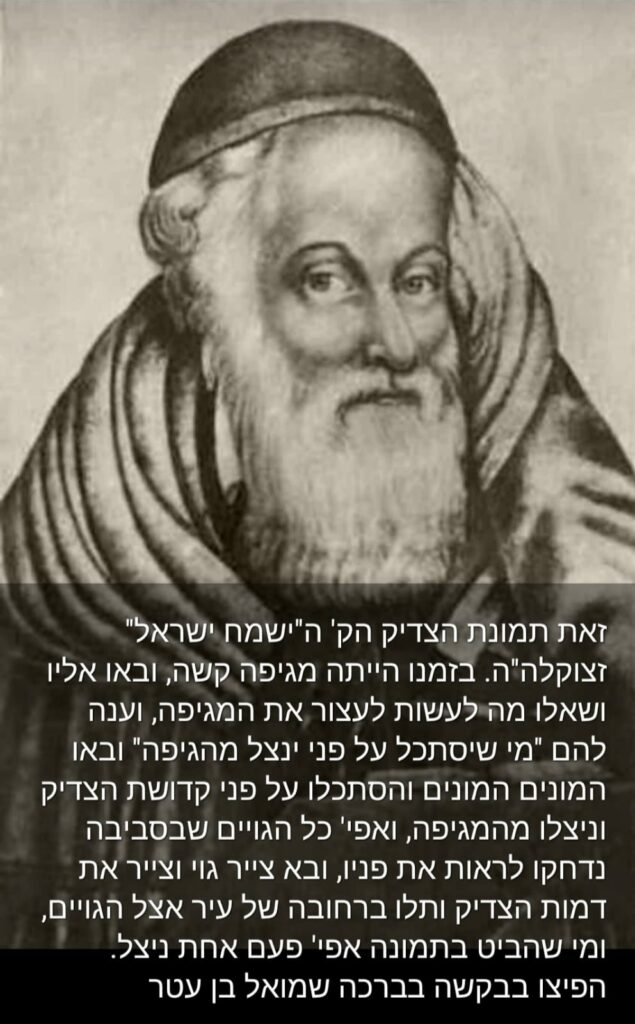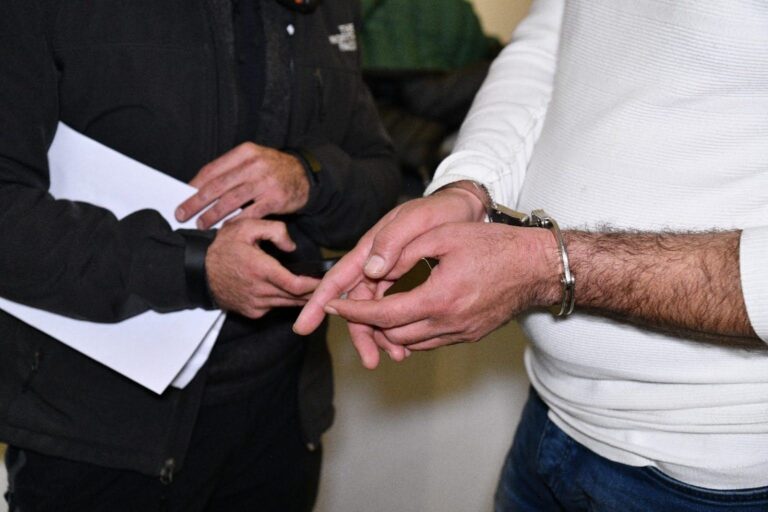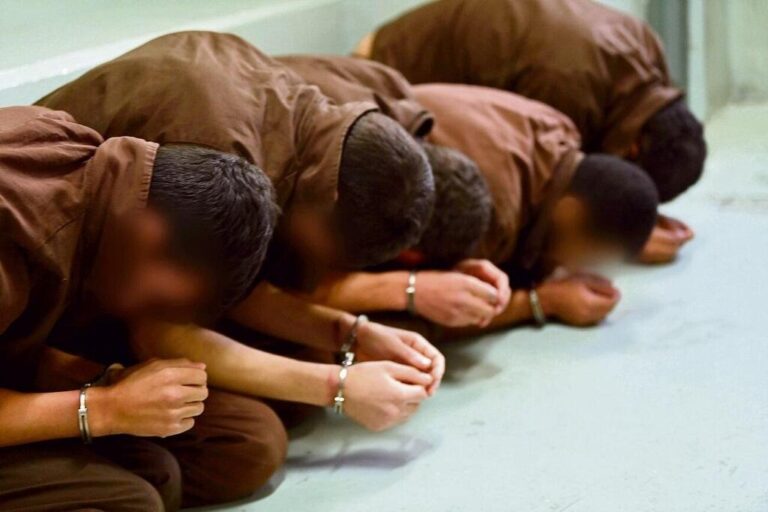by Rabbi Yair Hoffman for 5TJT.com
This Segulah was sent to me by a friend.
Supposedly, the author of the Yismach Yisroel lived in the time of a mageifah. When asked what to do, he responded, “If anyone just looks at my face he will saved from the epidemic.” The tale continues that everyone that looked at his face was not subject to the illness. Indeed, even gentiles flocked to see his countenance.
This author doubts the authenticity of the story.
First of all, how do we know that some overanxious chasid did not make up this story? The tale even goes beyond Moshe Rabbeinu. Moshe Rabbeinu’s visage did not cut it. In the parsha of the serpents, one had to look at the Nachshon and even then the person had to do Teshuvah. This story does not have Teshuvah with it. Even Yom Kippur is only mechaper with Teshuvah.
Secondly, there is no mention of this story in the Chassidisha Seforim that this author has seen.
Thirdly, the picture does not at all look like the author of the Yismach Yisroel. In fact, it kind of looks like the Vilna Gaon.
And finally, there are spelling errors in this.
Now that we have come to this conclusion, it is more likely that some pranking litvak came up with this entire thing.
Rav Yerachmiel Yisroel Yitzchok Dancyger (1853–1910), was the second Rebbe of Alechsander Chassidim. he was more famous than his father, the original Rebbe. He had a large chassidus and printed the Yismach Yisrael hagaddah (Hebrew: “Israel will Rejoice”) in 1911, which he wrote together with his brother, Reb Shmuel Tzvi (1840–1923), who later became the third Alechsander and authored the Tiferes Shmuel.
Readers confirmed that the story and picture is of the Yismach Moshe.The Sefer Tehilah l’Moshe explains that people that saw his picture – did Teshuvah on account of his hadras panim. In this author’s opinion, one may only believe this version of the story.












7 Responses
At least Yair Hoffman got a byline out of this.
Mthis photo is from the Yismach Moshe not the yismach yisroel,
Does Yair Hoffman have a minhag to first raise an obscure or rumored custom and then make a mockery of it?
Here is what his article sounds like:
This shaylah was sent to e by a friend. Supposedly the moon is made from cheese and a debate arose if it is cholov yisroel. However, after much contemplation I came to a conclusion that the moon is not made from cheese and therefore these is no concern if it is cholov Yisroel, as such, one may eat from eat without concern and it has a din of parave. Because Torah lo bashamyim hee.
“the picture does not at all look like the author of the Yismach Yisroel. In fact, it kind of looks like the Vilna Gaon”
The image is a well-known one of the ישמח משה. Someone mixed up their Chasidishe Rebbes.
Leave the Vilna Gaon זצ”ל out of this.
“it is more likely that some pranking litvak came up with this entire thing”
Outrageous comment. Please retract ASAP such a disgusting and libelous accusation. An apology is warranted for such a slander.
The author questions a Hasidic segulah based on Litvish hashkafah (which I agree with), and then blames it on a Litvak? In case the author didn’t realize it yet, Chasidim have their own ways of thinking and doing things, they don’t necessarily follow Litvish hashkafah.
Dear rabbi,
The scholarship behind this allegation is faulty and error-filled. This is a custom that has been practiced by the greatest of our Chasidic brethren and it is wrong to cast such aspersions on their practice.
(Do these words sound familiar)
How did this idiotic “kosher style” voodoo ever come into our Jewish lives??!!
The authentic Jewish response to mageifa and all other misfortunes is self-examination to discover what in our behavior requires teshuva and to do teshuva sincerely.
Anything else is just plain voodoo idolatry.
EDGARHOOVER – “How did this idiotic “kosher style” voodoo ever come into our Jewish lives??!!”
This so-called “voodo” and “idolatry” came into our Jewish lives from the Torah, which you may agree or disagree with.
The Talmud Bavli (a very classic Torah source) states in עירובין יג, ב explicitly that it is a mitzvah and a merit to see the face of a tzaddik. This is based on the possuk: ( וְהָיוּ עֵינֶיךָ רֹאוֹת אֶת מוֹרֶיךָ” (ישעיהו ל, כ . As such, adding this mitzva/merit is also spiritually uplifting.
In another place חגיגה ה, ב the Talmud goes even further, stating that seeing a tzaddik prevents death.
If you adopt the authority of Tamudic commentators, the Maharsha states that seeing a tzaddik is like seeing the Shechina מהרש”א חידושי אגדות חגיגה ה,ב. בירושלמי (עירובין פ”ה ה”א) נאמר כי המקביל פני רבו כמקביל פני שכינה. If you consider that “plain voodoo idolatry, take it up with the Maharsha.
Rabbi Yonosson Eibshitz wrote in יערות דבש ח”א דרוש יב that seeing a tzaddik brings much brocha and goodness:
“הרואה אותו, מקבל ממנו ברכת שפע וטוב, כמו שהרואה פני רשע, פוגם בנפשו ומשיב רעה לעצמו, כן הרואה פני צדיק, משיב לנפשו שפע טוב וברכה, כי עליו חל ושורה אור שכינה”
The tremendous spiritual benefits of just glancing at a tzaddik is listed in several Talmudic locations: עירובין יג, ב (Rebbe Yehudah HaNosi benefitted from merely seeing the backside of R’ Meir), תלמוד ירושלמי ביצה פ”ה ה”ב (Resh Lokish and R’ Yochonon benefitted from seeing the fingers of Rebbe Yehuda HaNosi) etc.
So, these so-called “idiotic “kosher style” voodoo” came into our Jewish lives from numerous Torah references. You may reject the sources but please respect those that accept them.